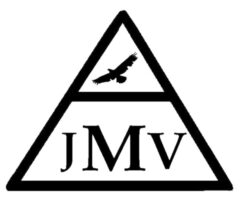Francisco Chacón-Lozsán, Péter Tamási
Cite
Chacón-Lozsán F, Tamási P. Comparing lung mechanics of patients with COVID related respiratory distress syndrome versus non-COVID acute respiratory distress syndrome: a retrospective observational study. J Mech Vent 2022; 3(4):151-157.
Abstract
Background
Most patients admitted to the intensive care unit with coronavirus disease (COVID-19) develop severe respiratory failure. Understanding lung mechanics helps to guide protective mechanical ventilation, improve oxygenation, and reduce the ventilator induce lung injury. This study aims to describe lung mechanics characteristics of patients with COVID -19 related acute respiratory distress syndrome (CARDS) and to compare them with non-COVID-19 associated ARDS.
Methods
We performed a retrospective observational study of lung mechanics: plateau pressure (Pplat), Driving pressure (DP), Mechanical power (MPw), Elastic (dynamic) power (EdPw), Total ventilatory power (TPw), and oxygenation parameters (ratio of arterial oxygen partial pressure to fractional inspired oxygen (PaO2/FiO2), the ratio of arterial oxygen partial pressure to fractional inspired oxygen multiplied by PEEP [PaO2/(FiO2 x PEEP)], arterial and venous carbon dioxide partial pressure (PaCO2, PvCO2), and Ventilation dead space (VD) were measured and compared between the two groups after initiation of mechanical ventilation.
Results
30 CARDS and 10 ARDS patients fulfilled the study requirements. We observed a significant higher MPw in the CARDS group (29.17 ± 8.29 J/min vs 15.78 ± 4.45 J/min, P 0.007), similarly observed with EdPw (256.7 ± 84.06 mJ/min vs 138.1 ± 39.15 mJ/min, P 0.01) and TPw (289.1 ± 84.51 mJ/min vs 161.5 ± 45.51, P 0.007). Inside the CARDS group, we found 2 subgroups, a low shunt subgroup and a higher shunt (Qs/Qt (%): 6.61 ± 2.46 for vs 40.3 ± 20.6, P 0.0009), however, between these two subgroups we didn’t find statistical differences on lung mechanic parameters but only in oxygenation parameters (PaO2/FiO2 and PaO2/FiO2*PEEP). When comparing these two subgroups with ARDS patients, we found more similarity between the low shunt CARDS and the ARDS patients on MP (R2 0.99, P 0.001), EdPw (R2 0.89, P 0.05) and TPw (R2 0.99, P 0.0009).
Conclusions
Our study suggests important differences between CARDS and ARDS regarding mechanical parameters that could lead to more complicated management of CARDS patients and a higher prevalence of VILI. However due to the study limitations, a bigger study is necessary to corroborate our findings.
Keywords
COVID-19, CARDS, ARDS, lung mechanics, VILI
References
| 1. Pfortmueller CA, Spinetti T, Urman RD, et al. COVID-19-associated acute respiratory distress syndrome (CARDS): Current knowledge on pathophysiology and ICU treatment – A narrative review. Best Pract Res Clin Anaesthesiol 2021; 35(3):351-368. https://doi.org/10.1016/j.bpa.2020.12.011 PMid:34511224 PMCid:PMC7831801 |
| 2. Haudebourg AF, Perier F, Tuffet S, et al. Respiratory mechanics of COVID-19- versus Non-COVID-19-associated Acute Respiratory Distress Syndrome. Am J Respir Crit Care Med 2020; 202(2):287-290. https://doi.org/10.1164/rccm.202004-1226LE PMid:32479162 PMCid:PMC7365370 |
| 3. Gattinoni L, Chiumello D, Caironi P, et al. COVID-19 pneumonia: different respiratory treatments for different phenotypes? Intensive Care Med 2020; 46(6):1099-1102. https://doi.org/10.1007/s00134-020-06033-2 PMid:32291463 PMCid:PMC7154064 |
| 4. Rocco PRM, Silva PL, Samary CS, et al. Elastic power but not driving power is the key promoter of ventilator-induced lung injury in experimental acute respiratory distress syndrome. Crit Care 2020; 24(1):284. https://doi.org/10.1186/s13054-020-03011-4 PMid:32493362 PMCid:PMC7271482 |
| 5. Mauri T, Lazzeri M, Bellani G, et al. Respiratory mechanics to understand ARDS and guide mechanical ventilation. Physiological Measurement 2017; 38(12):R280-H303. https://doi.org/10.1088/1361-6579/aa9052 PMid:28967868 |
| 6. Gattinoni L, Coppola S, Cressoni M, et al. COVID-19 does not lead to a “typical” acute respiratory distress syndrome. Am J Respir Crit Care Med 2020; 201:1299-1300. https://doi.org/10.1164/rccm.202003-0817LE PMid:32228035 PMCid:PMC7233352 |
| 7. Coppola S, Caccioppola A, Froio S, et al. Effect of mechanical power on intensive care mortality in ARDS patients. Crit Care 2020; 24:246. https://doi.org/10.1186/s13054-020-02963-x PMid:32448389 PMCid:PMC7245621 |
| 8. Vassali F, Pasticci I, Romitti F, et al. Does iso-mechanical power lead to iso-lung damage? An experimental study in a porcine. Anesthesiology 2020; 132(5):1126-1137. https://doi.org/10.1097/ALN.0000000000003189 PMid:32032095 |
| 9. Moraes L, Silva PL, Thompson A, et al. Impact of different tidal volume levels at low mechanical power on ventilator-induced lung injury in rats. Front Physiol 2018; 9:318. https://doi.org/10.3389/fphys.2018.00318 PMid:29670537 PMCid:PMC5893648 |
| 10. Gupta VK, Alkandari BM, Mohammed W, et al. Ventilator associated lung injury in severe COVID-19 pneumonia patients – Case Reports: Ventilator associated lung injury in COVID-19. Eur J Radiol Open 2020; 8:100310. https://doi.org/10.1016/j.ejro.2020.100310 PMid:33364262 PMCid:PMC7750144 |
| 11. Scendoni R, Gattari D, Cingolani M. COVID-19 pulmonary pathology, ventilator-induced lung injury (VILI), or sepsis-induced acute respiratory distress syndrome (ARDS)? Healthcare considerations arising from an autopsy case and miny-review. Clinical Pathol 2022; (4)15:2632010X221083223. https://doi.org/10.1177/2632010X221083223 PMid:35284825 PMCid:PMC8905213 |
| 12. Petersson J, Glenny RW. Gas exchange and ventilation-perfusion relationships in the lung. Eur Respir J 2014; 44:1023-1041. https://doi.org/10.1183/09031936.00037014 PMid:25063240 |
| 13. Diehl JL, Peron N, Chocron R. et al. Respiratory mechanics and gas exchanges in the early course of COVID-19 ARDS: a hypothesis-generating study. Ann Intensive Care 2020; 10:95. https://doi.org/10.1186/s13613-020-00716-1 PMid:32676824 PMCid:PMC7364286 |
